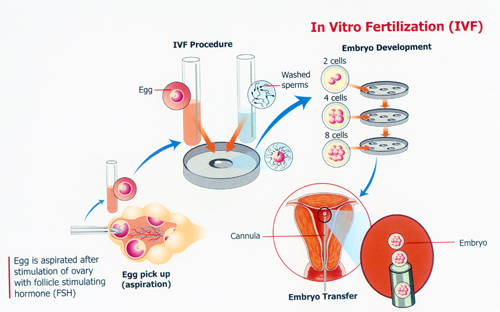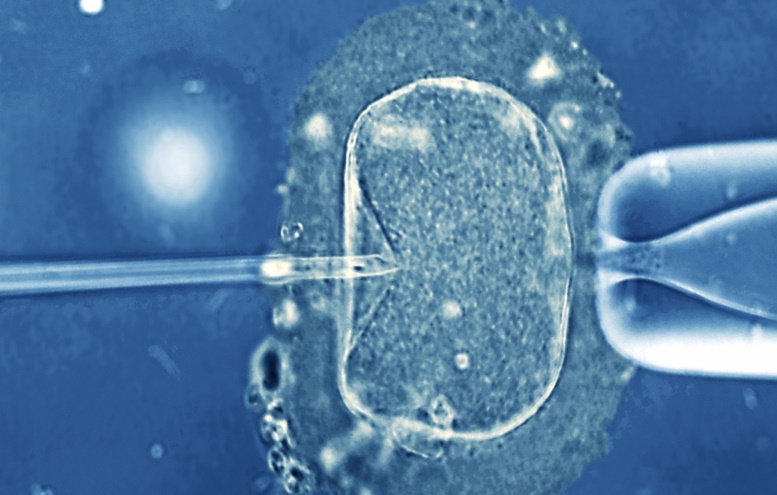
Have any questions? [email protected]
Registration Form
Your details will not be published without approval from the administration team.
Infertility and In Vitro Fertilization (IVF)
Today, in vitro fertilization (IVF) is practically a household word. But not so long ago, it was a mysterious procedure for infertility that produced what were then known as "test-tube babies." Louise Brown, born in England in 1978, was the first such baby to be conceived outside her mother's womb.
Unlike the simpler process of artificial insemination -- in which sperm is placed in the uterus and conception happens otherwise normally -- IVF involves combining eggs and sperm outside the body in a laboratory. Once an embryo or embryos form, they are then placed in the uterus. IVF is a complex and expensive procedure; only about 5% of couples with infertility seek it out. However, since its introduction in the U.S. in 1981, IVF and other similar techniques have resulted in more than 200,000 babies.
What Causes of Infertility Can IVF Treat?
When it comes to infertility, IVF may be an option if you or your partners have been diagnosed with:
- Endometriosis
- Low sperm counts
- Problems with the uterus or fallopian tubes
- Problems with ovulation
- Antibody problems that harm sperm or eggs
- The inability of sperm to penetrate or survive in the cervical mucus
IVF is never the first step in the treatment of infertility. Instead, it's reserved for cases in which other methods such as fertility drugs, surgery, and artificial insemination haven't worked
 The first step in IVF involves injecting hormones so you produce multiple eggs each month instead of only one.You will then be tested to determine whether you're ready for egg retrieval.
The first step in IVF involves injecting hormones so you produce multiple eggs each month instead of only one.You will then be tested to determine whether you're ready for egg retrieval.
Prior to the retrieval procedure, you will be given injections of a medication that ripens the developing eggs and starts the process of ovulation. Timing is important; the eggs must be retrieved just before they emerge from the follicles in the ovaries. If the eggs are taken out too early or too late, they won't develop normally. Your doctor may do blood tests or an ultrasound to be sure the eggs are at the right stage of development before retrieving them. The IVF facility will provide you with special instructions to follow the night before and the day of the procedure. Most women are given pain medication and the choice of being mildly sedated or going under full anesthesia.
During the procedure, your doctor will locate follicles in the ovary with ultrasound and remove the eggs with a hollow needle. The procedure usually takes less than 30 minutes, but may take up to an hour.
 Immediately following the retrieval, your eggs will be mixed in the laboratory with your partner's sperm, which he will have donated on the same day.
Immediately following the retrieval, your eggs will be mixed in the laboratory with your partner's sperm, which he will have donated on the same day.
While you and your partner go home, the fertilized eggs are kept in the clinic under observation to ensure optimal growth. Depending on the clinic, you may even wait up to five days until the embryo reaches a more advanced blastocyst stage.
Once the embryos are ready, you will return to the IVF facility so doctors can transfer one or more into your uterus. This procedure is quicker and easier than the retrieval of the egg. The doctor will insert a flexible tube called a catheter through your vagina and cervix and into your uterus, where the embryos will be deposited. To increase the chances of pregnancy, most IVF experts recommend transferring up to three embryos at a time. However, this means you could have a multiple pregnancy, which can increase the health risks for both you and the babies
Following the procedure, you would typically stay in bed for several hours and be discharged four to six hours later. Your doctor will probably perform a pregnancy test on you about two weeks after the embryo transfer.
 In cases where the man's sperm count is extremely low, doctors may combine IVF with a procedure called Intra Cytoplasmic Sperm Injection(ICSI). In this procedure, a sperm is taken from semen -- or in some cases right from the testicles -- and inserted directly into the egg.
In cases where the man's sperm count is extremely low, doctors may combine IVF with a procedure called Intra Cytoplasmic Sperm Injection(ICSI). In this procedure, a sperm is taken from semen -- or in some cases right from the testicles -- and inserted directly into the egg.
Once a viable embryo is produced, it is transferred to the uterus using the usual IVF procedure.
What Are the Success Rates for IVF?
Success rates for IVF depend on a number of factors, including the reason for infertility, where you're having the procedure done, and your age. The CDC compiles national statistics for all assisted reproductive technology (ART) procedures performed in the U.S., including IVF, GIFT, and ZIFT, although IVF is by far the most common; it accounts for 99% of the procedures. The most recent report from 2009 found:
Pregnancy was achieved in an average of 29.4% of all cycles (higher or lower depending on the age of the woman).
The percentage of cycles that resulted in live births was 22.4% on average (higher or lower depending on the age of the woman).
What is Embryo Freezing?
Any embryos that you do not use in your first IVF attempt can be frozen for later use. This will save you money if you undergo IVF a second or third time. If you do not want your leftover embryos, you may donate them to another infertile couple, or you and your partner can ask the clinic to destroy the embryos. Both you and your partner must agree before the clinic will destroy or donate your embryos.
DR. KEKIN C. GALA
(MD,FCPS,DGO,DFP)
GYNECOLOGIST & FERTILITY EXPERT
Address:-
DR GALA’S CLINIC
4,MEHTA CHAMBERS, LOVE LANE,
BYCULLA. MUMBAI 400 010
Disclaimer: "Author of the articals is responsible for the content, opinions, views etc.The editorial staff and kutchi medicos Associaton bears no responsibility for same"